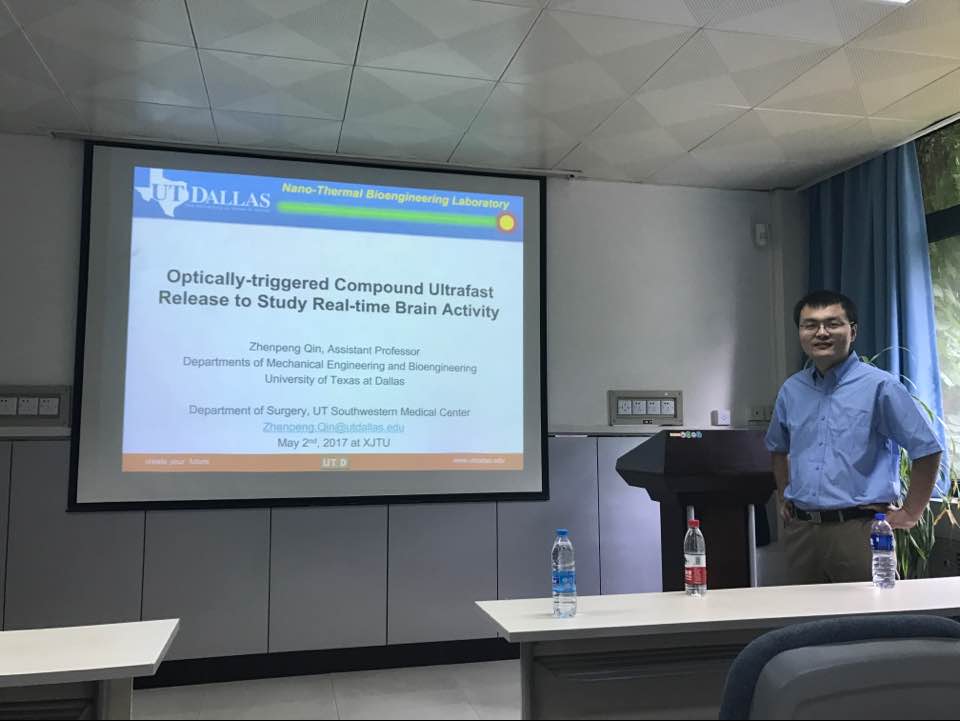At Professor Feng Xu’s invitation, Assistant professor ZhenpengQin from the
University of Texas at Dallas, visited BEBC on 2nd May, 2017 and delivered a report
entitled “Optically-triggered Compound Ultrafast Releaseto Study
Real-time Brain Activity” in the 308
meeting room in the School of Life Science and Technology.

His report showed the understanding how the brain controls behavior
requires advanced tools to manipulate brain activity. Inspired by recent
progress in optogenetics and caged compounds, he seeks to develop a new set of
tools that will allow localized and ultrafast control of brain activity to
influence behavior without genetic modification. Briefly, his new technique
involves using light stimulation to rapidly release compounds that are
encapsulated in tiny nanometer-sized particles. Specifically, plasmonic
gold-coated liposomes, i.e. plasmonic liposomes, consist of a liposomal core
and a thin gold nanoparticle shell. Near-infrared laser pulse activates
plasmonic liposomes to rapidly release the encapsulated compounds. he observed
that near-infrared laser irradiation triggers the release of fluorescent dye
from plasmonic liposomes within 0.1 ms and the release is highly dependent on
laser pulse number and energy. Compared with other techniques including caged
compound, this ultrafast near-infrared light-driven molecular release method is
easily adaptable to deliver a wide range of bioactive molecules with an
ultrafast optical switch, enabling new possibilities to investigate brain
activities within individual neurons and neural networks. In the end of the report, he had a heated discussion with teachers
and students in BEBC. After that, he was
invited to look around the labs of BEBC.

Introduction:
ZhenpengQin is an assistant professor of Mechanical
Engineering at The University of Texas at Dallas, with joint appointments in
Bioengineering and Surgery (UTSouthwestern Medical Center). He received his PhD
and post-doctoral training in the Departments of Mechanical Engineering and
Chemical Engineering, respectively, both at the University of Minnesota (2009 – 2014). Prior to Minnesota,
he obtained a BS in Thermal and Power Engineering from Xi’an Jiaotong University (2007) and a MS in Mechanical Engineering
from University of Akron (2009). His research interests center on the
fundamental understanding of the nano-thermo-bio interface between
nanoparticles and biomolecules(proteins and lipids) and applications of this
knowledge to diagnose infectious disease diagnostics and understand the brain.
He received external funding from the National Science Foundation (NSF), Cancer
Prevention and Research Institute of Texas (CPRIT), UT seed grants, and
non-profit organizations.